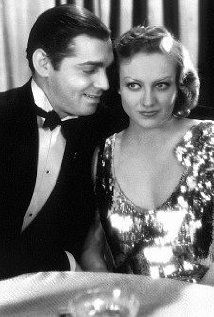
DANCE, FOOLS, DANCE
US, 1931, 80 minutes, Black and white.
Joan Crawford, Lester Vail, Cliff Edwards, William Bakewell, Clark Gable.
Directed by Harry Beaumont.
Joan Crawford had been in films for some years, working at MGM, in silent films and then in dramas and musicals. This was a more prestigious production and led to her becoming a significant star at MGM.
She portrays a carefree daughter of a millionaire working the stock exchange. Frivolous with her reckless brother, William Bakewell, at parties, using the services of bootleggers. She plays Bonnie who is the object of affection by a man about town, Bob, played by Lester Vail.
The stock market crashes, the father dies, leaving his children no money. Strong-minded, Bonnie goes to work at a newspaper, befriending one of the best reporters, who is called to cover murders which resemble the St Valentines Day Massacre (which actually occurred prior to the Wall St crash). Her irresponsible brother makes contact with his bootlegger and goes to work with a tough gangster, played intensely by Clark Gable, Gable’s performance means that he is obviously a star. Bonnie goes undercover, dances at Gable’s club, discovers the irresponsibility of her brother and is present when there is a shootout. She gives the information to her paper and to the police – and her suitor, who had condescended to offer marriage in the past, now genuinely loves.
The film is interesting for Joan Crawford fans – she has to play an extravagant playgirl, a serious newspaper reporter, and undercover moll, giving her dramatic, musical and dramatic opportunities to perform. The film was directed by Harry Beaumont, director of a number of films at this time including the Oscar-winning Broadway Melody of 1929.
1. An entertaining melodrama of its time? The aftermath of the crash of 1929?
2. MGM production values, Joan Crawford as star, Clark Gable on the rise? Black-and-white photography, locations, New York City, mansions, newspaper offices, clubs? The musical score? song and dance?
3. The irony of the title, the Americans at the time of the crash, recklessness before, hardships afterwards?
4. The opening parties, Bonnie and her behaviour, Bob in love with her? The father and his exasperation, Rodney and his boot legging connections?
5. Wall Street, the crash, the father’s death, funeral, the reading of the will, no money, Rodney unwilling to work? Bonnie deciding to work?
6. The role of the newspaper, writing stories, the editor cutting them down, her friendship with Ben, going out with him, talking? His advice, succinct stories? The news of the massacre, the editor sending out the men? His sending out Bonnie, to go undercover?
7. The quick transition, her becoming a dancer at Jake’s club, Bob seeing her, the others spurning her – after buying things at the auction of all the furniture and goods? Her ingratiating herself with Jake, his infatuation, going to his apartment, answering the phone, Rodney wanting Jake, her shock?
8. The background of Rodney, his job, instructed to keep quiet, driving the car at the massacre, talking with Ben at the bar, Jake and his decision for Ben to be killed, pressurising Rodney to kill him, at the subway, the murder, Rodney and his panic?
9. Bonnie getting out of the window, going to her apartment, Rodney, Jake and his thugs arriving, Bonnie knocking the gun, Rodney shooting Jake and his associate, Rodney being killed?
10. Bonnie phoning the press, the story, the editors and their admiration for her? Bob’s arrival, her previously thinking he was not genuine, the love for him, the kiss – and the happy ending?
11. A moralising story from MGM during the depression and the bootlegging era?